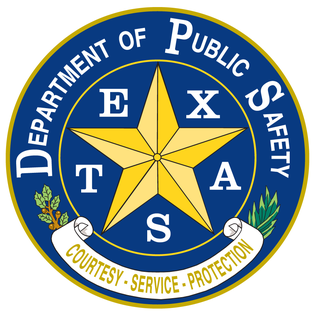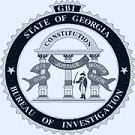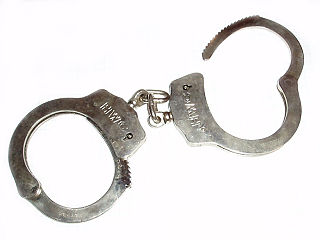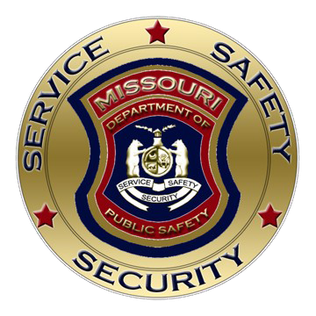
The Violent Crime Control and Law Enforcement Act of 1994, commonly referred to as the 1994 Crime Bill, or the Clinton Crime Bill, is an Act of Congress dealing with crime and law enforcement; it became law in 1994. It is the largest crime bill in the history of the United States and consisted of 356 pages that provided for 100,000 new police officers, $9.7 billion in funding for prisons which were designed with significant input from experienced police officers. Sponsored by U.S. Representative Jack Brooks of Texas, the bill was passed by Congress and signed into law by President Bill Clinton. Then-Senator Joe Biden of Delaware drafted the Senate version of the legislation in cooperation with the National Association of Police Organizations, also incorporating the Assault Weapons ban and the Violence Against Women Act (VAWA) with Senator Orrin Hatch.
The Occupational Safety and Health Administration is a regulatory agency of the United States Department of Labor that originally had federal visitorial powers to inspect and examine workplaces. The United States Congress established the agency under the Occupational Safety and Health Act, which President Richard M. Nixon signed into law on December 29, 1970. OSHA's mission is to "assure safe and healthy working conditions for working men and women by setting and enforcing standards and by providing training, outreach, education, and assistance." The agency is also charged with enforcing a variety of whistleblower statutes and regulations. OSHA's workplace safety inspections have been shown to reduce injury rates and injury costs without adverse effects on employment, sales, credit ratings, or firm survival.
The National Institute of Justice (NIJ) is the research, development and evaluation agency of the United States Department of Justice.

The Department of Public Safety of the State of Texas, commonly known as the Texas Department of Public Safety (DPS), is a department of the state government of Texas. The DPS is responsible for statewide law enforcement and driver license administration. The Public Safety Commission oversees the DPS. However, under state law, the Governor of Texas may assume command of the department during a public disaster, riot, insurrection, formation of a dangerous resistance to enforcement of law, or to perform his constitutional duty to enforce law. The commission's five members are appointed by the governor and confirmed by the Texas Senate, to serve without pay for staggered, six-year terms. The commission formulates plans and policies for enforcing criminal, traffic and safety laws, preventing and detecting crime, apprehending law violators, and educating citizens about laws and public safety.

The Office of Justice Programs (OJP) is an agency of the United States Department of Justice that focuses on crime prevention through research and development, assistance to state, local, and tribal criminal justice agencies, including law enforcement, corrections, and juvenile justice through grants and assistance to crime victims.
The Office of Juvenile Justice and Delinquency Prevention (OJJDP) is an office of the United States Department of Justice and a component of the Office of Justice Programs. The OJJDP publishes the JRFC Databook on even numbered years for information on youth detention.

The Georgia Bureau of Investigation (GBI) is the state bureau of investigation of the U.S. state of Georgia. It is an independent, statewide agency that provides assistance to Georgia's criminal justice system in the areas of criminal investigations, forensic laboratory services, and computerized criminal justice information. Its headquarters is located in unincorporated DeKalb County, near Decatur and in Greater Atlanta.

The Organized Crime Drug Enforcement Task Force (OCDETF) is a federal drug enforcement program in the United States, overseen by the Attorney General and the Department of Justice. The principal mission of the OCDETF program is to identify, disrupt, and dismantle the major drug trafficking operations and tackle related crimes, such as money laundering, tax and weapon violations, and violent crime, and prosecute those primarily responsible for the nation's drug supply.

Transnational organized crime (TOC) is organized crime coordinated across national borders, involving groups or markets of individuals working in more than one country to plan and execute illegal business ventures. In order to achieve their goals, these criminal groups use systematic violence and corruption. Common transnational organized crimes include conveying drugs, conveying arms, trafficking for sex, toxic waste disposal, materials theft and poaching.
Local Law Enforcement Block Grants (LLEBG) were federal assistance block grant programs provided by the United States Department of Justice to local governments, which would then use the funds to support public safety or crime prevention efforts. It was part of the Bureau of Justice Assistance office.

The Oklahoma State Bureau of Investigation (OSBI) is an independent state law enforcement agency of the government of Oklahoma. The OSBI assists the county sheriff offices and city police departments of the state, and is the primary investigative agency of the state government. OSBI works independent of the Oklahoma Department of Public Safety to investigate criminal law violations within the state at the request of statutory authorized requesters. The OSBI was created in 1925 during the term of Governor Martin E. Trapp.

The Florida Department of Law Enforcement (FDLE) is a state-wide investigative law enforcement agency within the state of Florida. The department formally coordinates eight boards, councils, and commissions. FDLE's duties, responsibilities, and procedures are mandated through Chapter 943, Florida Statutes, and Chapter 11, Florida Administrative Code. FDLE is headed by a commissioner who reports to the Florida Cabinet, which is composed of the governor, the attorney general, the chief financial officer, and the commissioner of agriculture. The commissioner is appointed to his position by the governor and cabinet and confirmed by the Florida Senate.

The California Department of Justice is a statewide investigative law enforcement agency and legal department of the California executive branch under the elected leadership of the California Attorney General (AG) which carries out complex criminal and civil investigations, prosecutions, and other legal services throughout the US state of California. The department is equivalent to the State Bureau of Investigation in other states.

The Department of Public Safety of the State of Missouri, commonly known as the Missouri Department of Public Safety (DPS), is a department of the state government of Missouri.
The National Criminal Justice Association (NCJA) is a Washington, D.C. based organization that represents a variety of local, state, and tribal governments on crime prevention and control issues. The organization primarily works as a public policy liaison that promotes understanding of the best criminal justice practices between federal and state governments.
Secure Communities is a data-sharing program that relies on coordination between federal, state, and local law enforcement agencies. The program was designed to "check the immigration status of every single person arrested by local police anywhere in the country". As part of the program, fingerprints that are taken upon arrest, which are traditionally forwarded to the FBI, are then also forwarded to the Department of Homeland Security (DHS). If these finger prints match the DHS's Automated Biometric Identification System (IDENT), then the ICE district office decides whether or not to issue a detainer request which can include requesting that the person be detained for up to 48 hours (I-247D), or a request for ICE to be notified upon their release (I-247N).
The Nationwide Suspicious Activity Reporting (SAR) Initiative (NSI) is a program of the United States government used to collect and share reports of suspicious activity by people in the United States. The Nationwide SAR Initiative (NSI) builds on what law enforcement and other agencies have been doing for years — gathering information regarding behaviors and incidents associated with criminal activity — but without the customary restrictions on collecting data on individuals in the absence of reasonable suspicion or probable cause. The program has established a standardized process whereby SARs can be shared among agencies to help detect and prevent terrorism-related criminal activity. This process is in direct response to the mandate to establish a "unified process for reporting, tracking, and accessing [SARs]" in a manner that rigorously protects the privacy and civil liberties of Americans, as called for in the 2007 National Strategy for Information Sharing (NSIS), which in turn was authorized by the Intelligence Reform and Terrorism Prevention Act of 2004. Reports of suspicious behavior noticed by local law enforcement or by private citizens are forwarded to state and major urban area fusion centers as well as DHS and the FBI for analysis. Sometimes this information is combined with other information to evaluate the suspicious activity in greater context. The program is primarily under the direction of the US Government & US Department of Justice.
The Edward Byrne Memorial Justice Assistance Grant Program, or JAG originates out of the Consolidated Appropriations Act of 2005. The program is named for New York City police officer Edward Byrne who was killed in the line of duty in 1988 while protecting an immigrant witness who agreed to testify against drug dealers. The JAG program is administered by the Office of Justice Programs's Bureau of Justice Assistance, and provides federal criminal justice funding to state, local and tribal jurisdictions. The funding is intended for a variety of areas, such as personnel, training, equipment and supplies. https://en.wikipedia.org/w/index.php?title=Edward_Byrne_Memorial_Justice_Assistance_Grant_Program&action=edit In Fiscal Year 2019, $263.8 million in funding was available by the JAG Program. The Recovery Act of 2009 appropriated $2 billion in funding to the JAG program.

Brian O’Hara is an American law enforcement official who is serving as the 54th Chief of the Minneapolis Police Department. He was the first police chief appointed to lead the Minneapolis Police Department after the murder of George Floyd.












